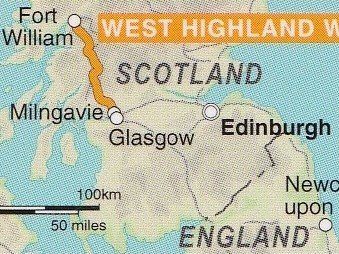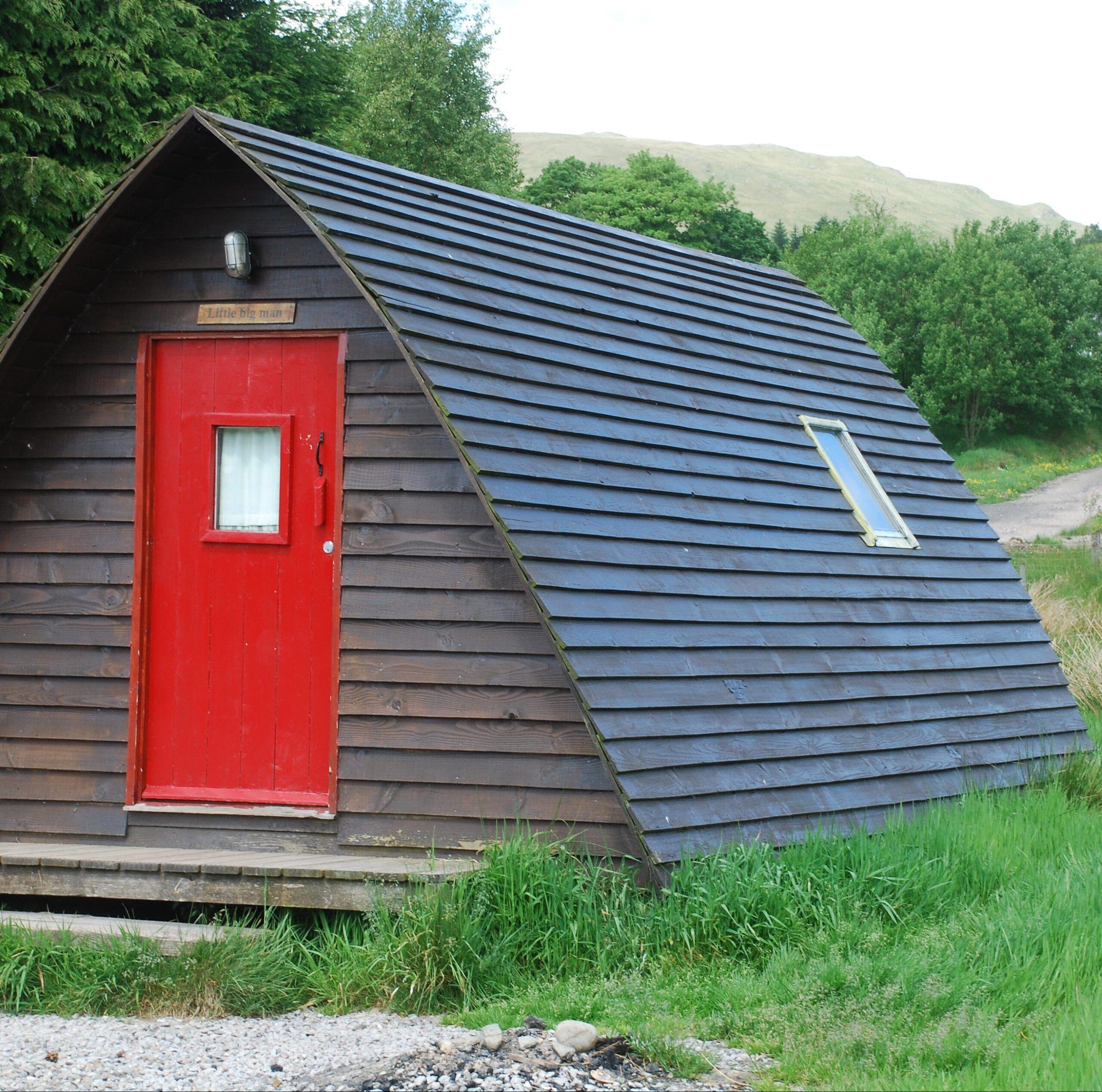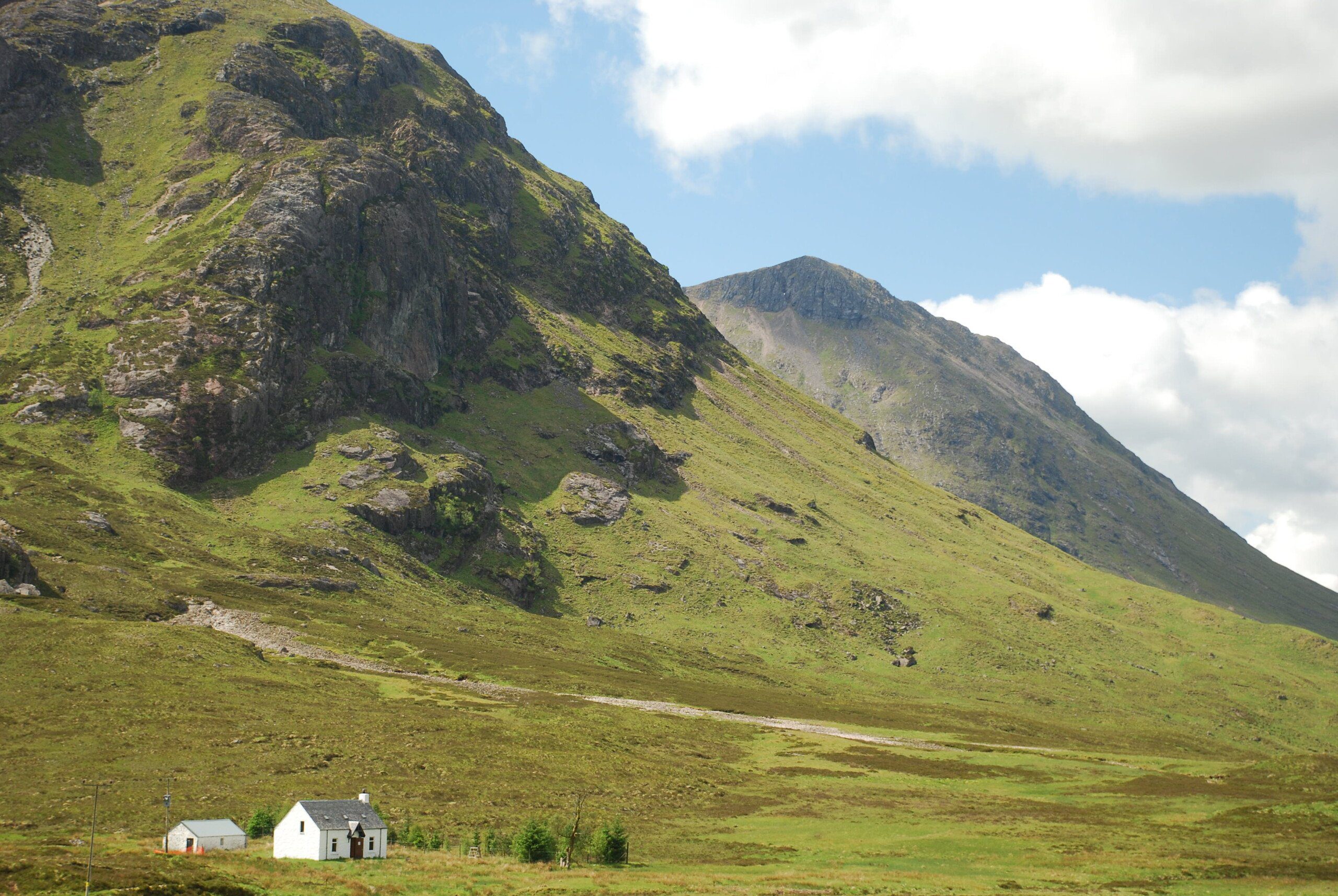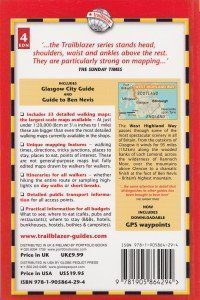The West Highland Way: The Basics
WHERE IS THE PATH? Starting just north of Glasgow, the West Highland Way travels north up the western side of the country, through some of the most dramatic – and emptiest – scenery in the country.
WHERE DOES THE WEST HIGHLAND WAY START? Milngavie, a short train ride (or a day’s walk) north of Glasgow.
AND WHERE DOES IT END: Fort William, on the shores of Loch Linnhe and in the shadow of the UK’s highest peak, Ben Nevis.
HOW LONG IS THE WEST HIGHLAND WAY? 96 miles
IS IT A NATIONAL TRAIL? It’s the Scottish equivalent of a National Trail, namely a Great Trail.
HOW LONG DOES IT TAKE TO WALK THE WEST HIGHLAND WAY? 6-8 days
HOW HARD IS THE WEST HIGHLAND WAY? Surprisingly straightforward, though with some quite remote sections. But the path is popular and well maintained and the slopes, though sometimes abrupt, are for the most part few and far between (though if you’ve just completed the brutal Devil’s Staircase, the steepest part of the trail, you may feel this assessment underplays just how tough one or two of the climbs can be!)

Introduction
The first thing to say about the West Highland Way is that you shouldn’t be put off by its name. People see the word ‘Highland’ in its title and automatically think that this week-long trail features mountains and monroes aplenty. In other words, there’s a lot of ups and a lot of downs on this path – but not much of the flat stuff. The truth is surprisingly different. For the West Highland Way actually has a habit of following the path of least resistance, opting for mountain passes rather than mountain peaks. In fact, in this regard it’s one of the easier long-distance trails. Its length, too, at less than 100 miles, makes it one of the shorter of the trails on this website, with only Hadrian’s Wall, the Dales Way and the Ridgeway being shorter.
Nevertheless, that’s not to say that this walk is easy-peasy. It does pass through the remote Rannoch Moor, for starters, which can be tricky to negotiate if the weather’s against you. There is also the Devil’s Staircase, a 259m (850ft) ascent to the highest point on the trail (548m/1797ft) that will have you weeping well before the summit.
Is the West Highland Way for you?
Useful info on the West Highland Way
Transport to and from the path
Getting to and from the path is very straightforward. The start is close to Glasgow, the northern terminus for the West Coast line from London, and is well served by plane, coach and bus too. From there you can catch a train to Milngavie and the start of the walk proper. (Or, if you’ve time on your hands, the book describes the walk from Glasgow city centre to Milngavie.)
From Fort William at the other end of the trail it’s equally simple, with trains to Glasgow and on to Mallaig and Oban as well as buses to Inverness and other destinations.
Transport along the West Highland Way
Public transport is also so much better than we have any right to expect. There are places such as the Bridge of Orchy where you’ll find little other than a hotel, a river and bridge – but even there, you’ll find a bus and train service. Sure, sometimes you may need to take a bus (or two) to get to a train station first – but still, the fact there’s a bus service at all is little short of a miracle. The one exception is the eastern side of Loch Lomond, where you’ll be spending a couple of days; there is no buses or trains serving anywhere east of the loch between Balmaha and Inverarnan. That said, there are ferries that can transport you across the lake to where there are buses and trains.
Walking the West Highland Way with a dog
Plenty of streams to drink from, not much cattle (and most of what there is tends to be docile), lots of places to run around off the leash and plenty of campsites and B&Bs that accept dogs – this is a great trail for dogs. Do note that the path underfoot can be a bit stony so it pays to ‘train’ your dog’s paws beforehand by toughening them up (take them on a stony trail near your house if you have one). Note, too, that there are plenty of sheep around so your dog will need to be on a lead for a fair bit of the trail. And do always carry some food and water for those days where they’re in short supply. Oh, and most essential of all, don’t forget the tick remover (you can get them from your vet or pet stores for pennies) – there are plenty of them on the West Highland Way.
So where might I get lost? The path is well signposted so you won’t find it easy to get lost on the West Highland Way. True, Rannoch Moor is bleak and featureless and you may struggle to get your bearings; but, in truth, only if there’s a thick fog could you really lose the footpath.
Camping and accommodation along the West Highland Way
Camping Campers are very well catered for along the West Highland Way. You can camp all along the trail with official campsites every few miles. Furthermore, several of these campsites have wigwams where, for a few quid more, you get your own A-frame ‘shed’ to bed down in, many of them supplied with electricity and lighting. Alas, they’re not as cheap as they once were – with the glamping revolution of the last few years, the prices of these wigwams have shot up – but, well, they are still there, and are still charming in their own way. Wild camping is also allowed along the way, although you can’t just camp anywhere, but have to pitch your tent at designated sites.

The West Highland Way was the first trail to really popularise wigwams, such as here at Strathfillan, near Tyndrum
Indeed, the only downside to camping on the West Highland Way is the midges. Try to avoid letting them get into your tent if you want a good night’s sleep.
If one assumes that these wigwams can be described as your own private bunkhouse, then it’s fair to say that the hostel and bunkhouse situation along the West highland Way is very good too. There are three or four youth hostels along the trail (plus one in Glasgow, of course). Supplementing them are the bothies, wigwams and other bunkhouses (such as the West Highland Way Sleeper at the bridge of Orchy). All in all, there’s plenty of budget accommodation along the trail.
As for B&Bs and hotels, there are plenty of these too and some of them quite characterful; I’ve already mentioned the Drovers Inn on this page and the West Highland Way offers the perfect excuse to book a room at Scotland’s most haunted pub.
Facilities along the West Highland Way
Food and drink You shouldn’t starve on the West Highland Way but you need to do a bit of planning if you don’t want to go hungry. Some days you won’t see a shop or eatery throughout the day so you need to know in advance where you’re going to eat, and if you should take a packed lunch with you. The guide book has a ‘village facility’ table that tells you what you can expect to find in terms of food, accommodation and amenities at each place on or near the trail.
Shops, banks and ATMs Given it’s such a remote trail you must expect that facilities along it will be rather limited. Actually, many places do have a cash machine though always carry a bit of spare moolah with you, just in case they’re not working when you turn up. Don’t expect there to be a great range of shops, either, though most places will have some sort of food store and, because you are definitely in walking country, there are some outdoor shops too.
Trekking companies and baggage carriers There’s plenty of companies offering to carry your luggage, book your accommodation and even guide you along the trail, as any search on google will confirm.
Dangers and annoyances
If it wasn’t for biting insects, the West Highland Way could almost be considered the perfect walk. Those insects come in two forms: ticks, which are potentially dangerous as they could give you Lyme disease, which can be fatal; and midges, which are harmless but bloody annoying and often reach locust-like populations on the trail.
Thankfully, insect repellent is pretty good at warding off both. As an additional precaution, it’s a good idea to wear long trousers and long socks when walking the trail – this should prevent ticks from biting. As for your dog, make sure you bring a tick remover and also make sure their Frontline treatment is current (this prevents most biting insects from attacking).

Lonely Lagangarbh Hut sits on the north side of the Buachaille Etive Mor, Glencoe.
As for midges, avoid sitting outside in the early morning and late evening (ie, just the times when you probably do want to sit down); try to sit in a breeze, in light clothing, and preferably indoors, and you should be fine. And if need be, invest in a midge hat (it looks like the one that beekeepers wear, though the holes are smaller).
Other than that there’s not much danger on the West Highland Way. The fact that so much of it is quite remote may put off some people, but whilst the path itself steers clear from civilisation for much of its length, there are nearly always people on the trail who can help you if you need it.
Finally, during the day there often aren’t that many places where you can get something to eat; so do pack some food on these stages.
Tips and hints
1) Glasgow is a fascinating place and, once your ears have tuned in to the accent and you understand what the locals are saying, you’ll find it’s a friendly one too. If you’ve got a day to spare, do have a wander around.
2) The walk from Glasgow to Milngavie is not thrilling but it’s pleasant enough – and it does push the total mileage for the walk above the century mark, which is a bonus. If you’ve got a day to spare, there are worse ways to spend it.
3) Because of the midge situation this is one trail where I really recommend walking in spring or autumn. Avoid winter too – it’s too cold and many of the B&Bs and eateries will be closed.
4) Try to start your day’s walk as early as you can each morning; the trail is quieter then and there’s more wildlife about.
5) The train north-west from Fort William to Mallaig, the departure point for ferries to Skye, is lovely. I took a return trip on it just to admire the landscape and absolutely loved it (even though I had no intention or time to get to Skye itself).
6) Bring some change for the honesty boxes. There are several along the trail, fiulled with refreshments, and it’s always lovely when you find one. So encourage people to keep them stocked by buying something from them.
The West Highland Way: Further info
‘Perfect for pre-trip planning and for taking with you, this is a must for all walking the glorious West Highland Way’ Walking Britain
‘Practical rather than pretty, its hand-drawn route maps are filled with useful pointers, such as “only lunch stop between Milngavie and Gartness”. Also welcome are the separate public transport maps for those not doing the way in one go.’ Scotland Outdoors
‘If I wrote travel guides I d like to think that they would turn out like this one. It fits in a coat pocket, weighs 8oz, and although it had some rough use there was no sign of it falling apart’. John Clarke
A practical guidebook to walking the West Highland Way that runs for 96 miles (154.5km) from Glasgow to Fort William.
This West Highland Way walking guide includes:
* 53 large-scale walking maps – at just under 1:20,000, and 26 guides to towns and villages.
* Itineraries for all walkers – whether walking the whole Way or the highlights on day walks and short breaks.
* Where to stay – campsites, hostels, B&Bs, guesthouses and hotels with reviews.
* Where to eat – cafes, pubs, tearooms, takeaways and restaurants with reviews.
* What to see – historical, cultural and natural points of interest.
* Comprehensive public transport information – for all access points on the West Highland Way.
* Flora and wildlife, four page colour guide, plus illustrated chapter on local plants, birds and animals.
* GPS waypoints – also downloadable from the Trailblazer website.
* Extra colour sections: 16pp colour introduction and 16pp of colour mapping for stage sections (one stage per page) with trail profiles (showing ascents and descents), and complete West Highland Way map.







